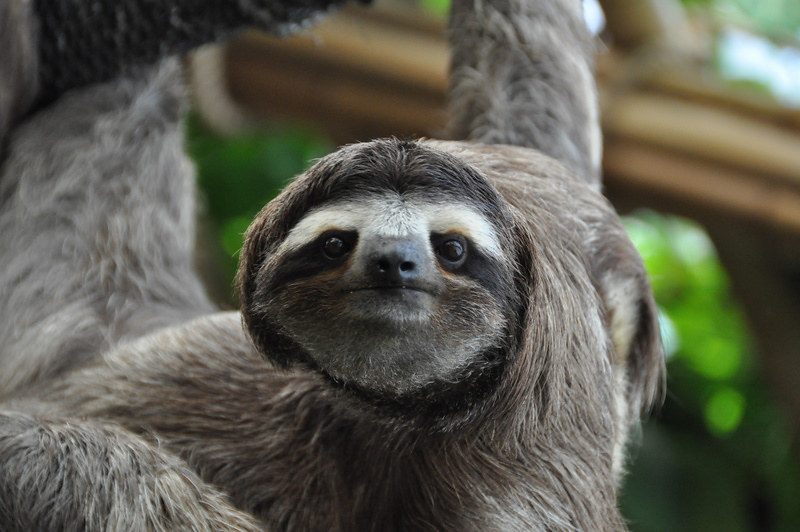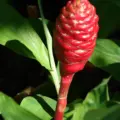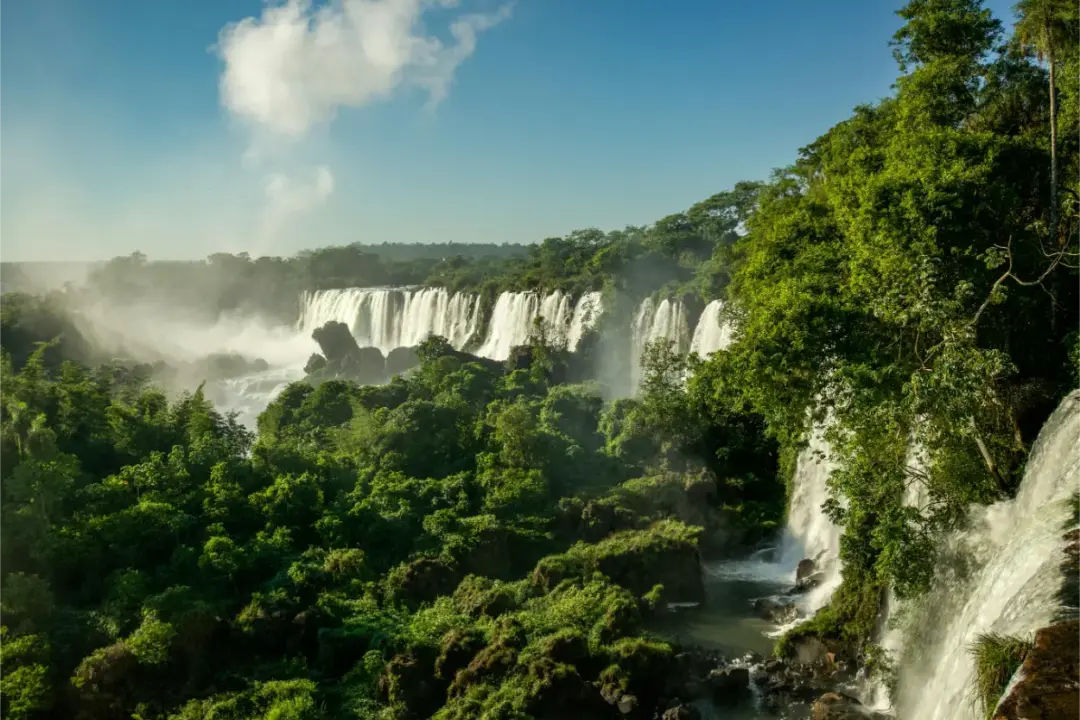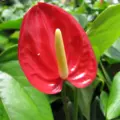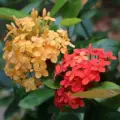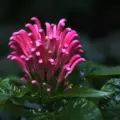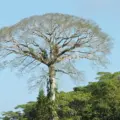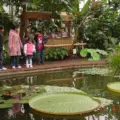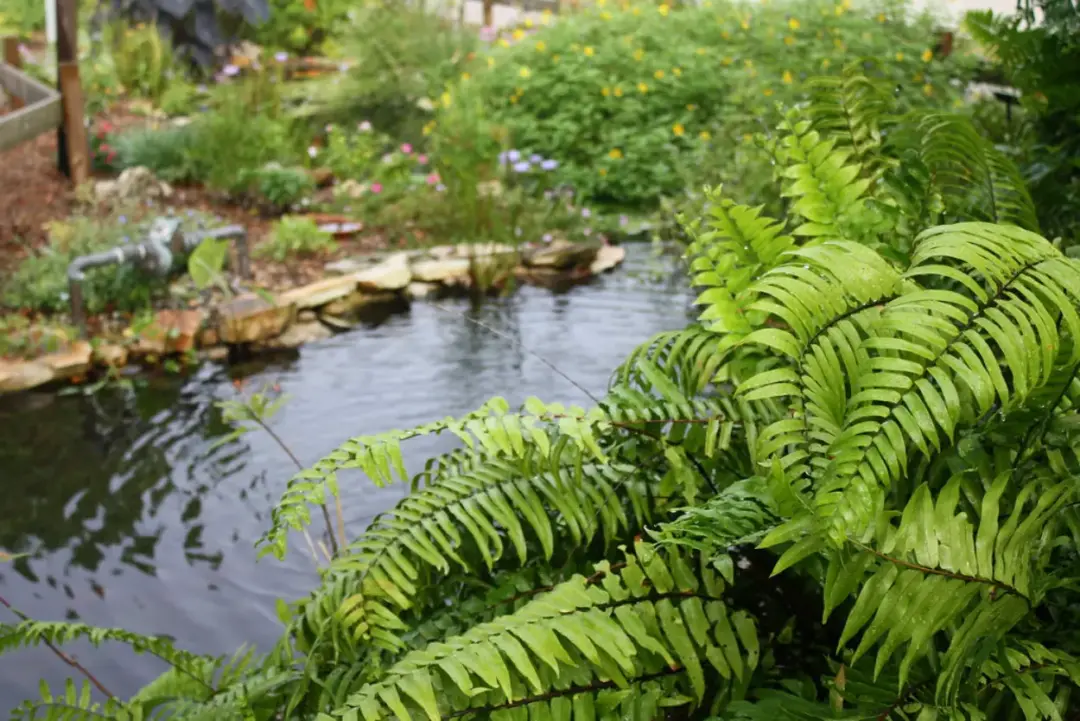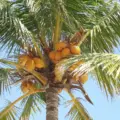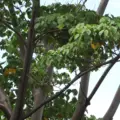Bromeliads are among the most colorful and captivating plants on Earth, and their incredible diversity makes them a favorite among garden enthusiasts, interior decorators, and wildlife lovers. From tiny, air-dwelling species to massive rainforest giants, these plants come in an astonishing array of shapes, sizes, and hues. But how many types of bromeliads are there? What are the most iconic bromeliad species? Let’s dive into the fascinating world of these tropical wonders.
🌿 What Are Bromeliads?
Bromeliads are a family of flowering plants (Bromeliaceae) that include more than 3,000 known species. Native to the tropical and subtropical Americas, they thrive in diverse ecosystems — from the lowland rainforests of the Amazon to the dry, rocky highlands of the Andes. These exotic plants are not only beautiful but are also ecological powerhouses, offering water and habitat to numerous animals, especially frogs and insects.
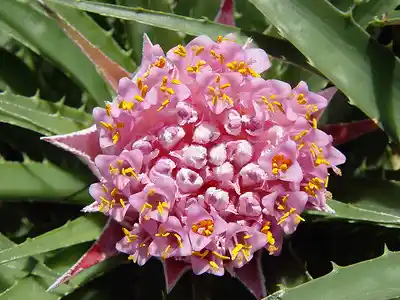
Some bromeliads grow in soil, while others — known as epiphytes — cling to trees and draw moisture from the air. Their specialized leaf arrangements form natural tanks that collect rainwater, transforming them into mini-ecosystems that support vibrant micro-life.
🌸 How Many Types of Bromeliads Are There?
With over 3,000 recorded species and hundreds of hybrids and cultivars, bromeliads offer one of the most varied selections in the plant kingdom. These species are divided into approximately 75 genera, with the most popular being Guzmania, Aechmea, Tillandsia, Vriesea, Neoregelia, and Pitcairnia. Whether you’re an indoor gardener or a landscape designer, there’s a bromeliad species for virtually every environment.
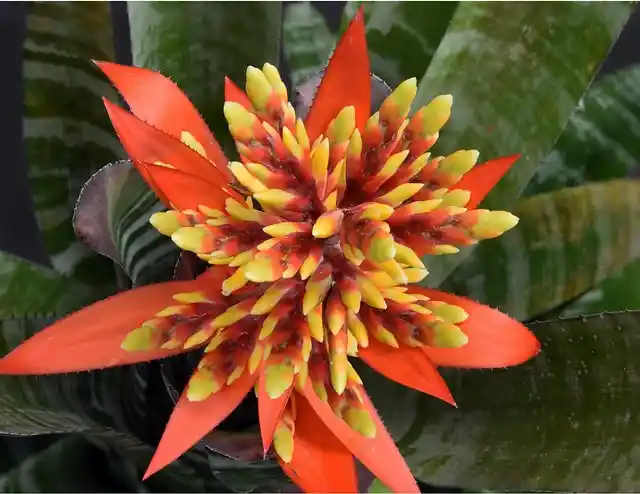
New hybrids are constantly being developed to enhance coloration, texture, and hardiness. This makes the number of types of bromeliads virtually limitless, as horticulturists continue to expand the variety for enthusiasts and collectors alike.
📷 Types of Bromeliads With Pictures (Described Visually)
While we can’t show images here, we can describe some of the most stunning types of bromeliads as if you had their pictures right before you. These species not only differ in shape and structure but also offer a rainbow of colors and unique floral arrangements.
- Guzmania: Known for its tall, sleek, and colorful bracts in red, orange, yellow, and purple. Leaves are usually smooth and arranged in a symmetrical rosette.
- Neoregelia: Low-growing and flat, with central leaves that turn bright red or pink when flowering. Often spotted or striped in white, red, or purple.
- Aechmea: Recognizable by its spiky leaves and long-lasting flowers, often pink with blue or purple tips. This is one of the most durable indoor bromeliads.
- Vriesea: Elegant sword-shaped flower spikes with smooth, soft-edged leaves. They have a distinctive, glossy look and are popular for minimalist designs.
- Tillandsia (Air Plants): These quirky species grow without soil. Their trichomes (tiny hair-like structures) absorb water directly from the air, making them perfect for hanging displays and terrariums.
- Billbergia: Tubular and upright, often with dramatic pink and blue blooms that hang downward like chandeliers. Ideal for hanging baskets.
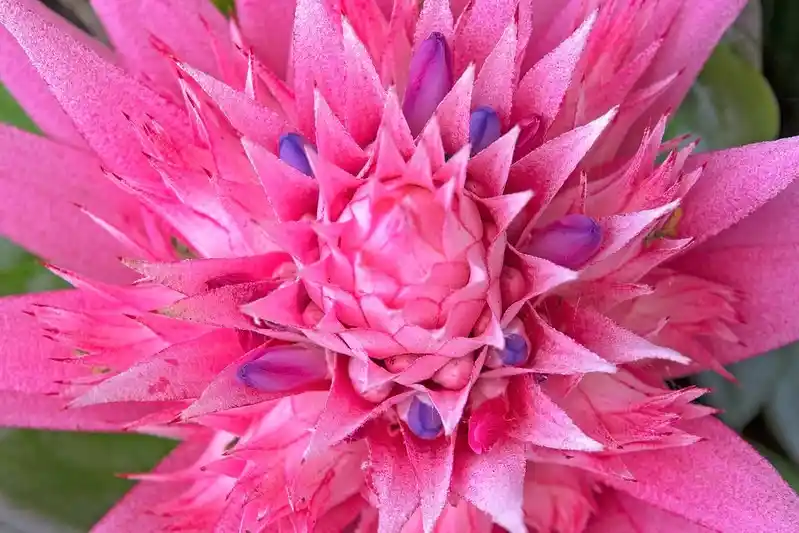
Each of these types showcases the incredible adaptability and aesthetic charm of bromeliads, making them a dream addition to any botanical collection.
🌍 Bromeliads Varieties Across Ecosystems
Bromeliads are not confined to tropical jungles. They thrive in deserts, highlands, and even urban spaces. Their ability to grow with minimal soil or moisture has made them popular choices for xeriscaping and vertical gardens.
Some varieties are adapted to full sun and dry climates, like those in the genus Dyckia — rosette-forming with spiny leaves and striking symmetry. Others, like Cryptanthus (also called Earth Stars), grow in shady forest floors and display incredible leaf patterns and earthy tones.
🧬 The Science Behind Bromeliad Species Diversity
What sets bromeliads apart from other tropical plants is their immense biological diversity. This family includes both monocarpic species (which bloom once and then die) and polycarpic ones (which bloom repeatedly). The flowering mechanism in some bromeliads can be triggered by specific environmental cues like temperature drops, water levels, or even ethylene gas exposure.
Their tank-forming rosettes not only support insects and frogs but also collect leaf litter and organic material, contributing to rainforest nutrient cycles. In fact, some scientists consider tank bromeliads essential keystone species in rainforest ecosystems. That’s an incredible role for a plant!
🌟 Largest Bromeliad Species
If you’re impressed by size, the largest bromeliad species will leave you in awe. One of the most gigantic species is Puya raimondii, native to the high Andes of Peru and Bolivia. It can reach up to 10 meters (33 feet) in height when flowering — a botanical skyscraper!
This incredible plant can take up to 100 years to bloom, and when it does, it produces over 8,000 flowers in a single spike before it dies. It’s not just large — it’s also rare and endangered, making it one of the most unusual members of the bromeliad family.
🏡 Growing and Caring for Bromeliads at Home
Despite their exotic origins, bromeliads are surprisingly easy to care for. They thrive both indoors and outdoors, depending on the species. Most prefer bright, indirect sunlight and well-draining potting media — often a mix of bark, moss, and perlite. Water is typically added directly to the central cup (or tank), while the roots serve mainly for support.
Bromeliads also appreciate humidity, so misting them or placing a tray of water nearby can enhance their growth. Be cautious not to overwater, as stagnant water in their tanks can lead to rot. With the right care, they can thrive for years and may even produce “pups” — small offshoots that you can replant to grow your collection!
🌈 Unusual Bromeliad Facts That May Surprise You
- 🔬 Bromeliads are relatives of the pineapple! Yes — Ananas comosus is a bromeliad species.
- 🪷 Some frogs raise their tadpoles in bromeliad tanks, where the water is nutrient-rich and safe from predators.
- 🌀 Air plants (Tillandsia) can survive entirely without soil, making them popular for art installations and terrariums.
- 🌿 Some bromeliads can absorb nutrients through their leaves, bypassing traditional root systems entirely.
- 🌎 Bromeliads help purify the air and improve indoor humidity — nature’s little humidifiers!
The deeper you explore, the more you realize that bromeliads are not just decorative plants — they are living ecosystems, air filters, pollinator hubs, and natural works of art.
🔍 Current Trends: Bromeliads in Modern Design and Conservation
Bromeliads are seeing a revival in interior design, especially in biophilic architecture and minimalist décor. Designers are using bromeliads in wall-mounted frames, living sculptures, and open-air gardens to create calming, plant-rich environments.
Meanwhile, in the wild, conservationists are working hard to protect endangered bromeliad species from habitat loss and illegal collection. Community nurseries and botanical gardens around the world are helping propagate rare species, ensuring they aren’t lost to deforestation.
🌱 Conclusion: Why Bromeliads Are the Stars of the Plant World
From the colorful types of bromeliads you can grow at home to the largest bromeliad species found in the high Andes, these plants showcase the spectacular diversity and resilience of the natural world. Whether you’re a plant parent, a conservationist, or just curious about life’s wonders, bromeliads offer something for everyone.
Their vibrant forms, ecological roles, and easy care make bromeliads a perfect choice for modern gardens, tropical collections, and nature lovers worldwide. Ready to add one to your home or learn more? Once you start with bromeliads, it’s hard to stop — their beauty is simply addictive. 🌿✨
